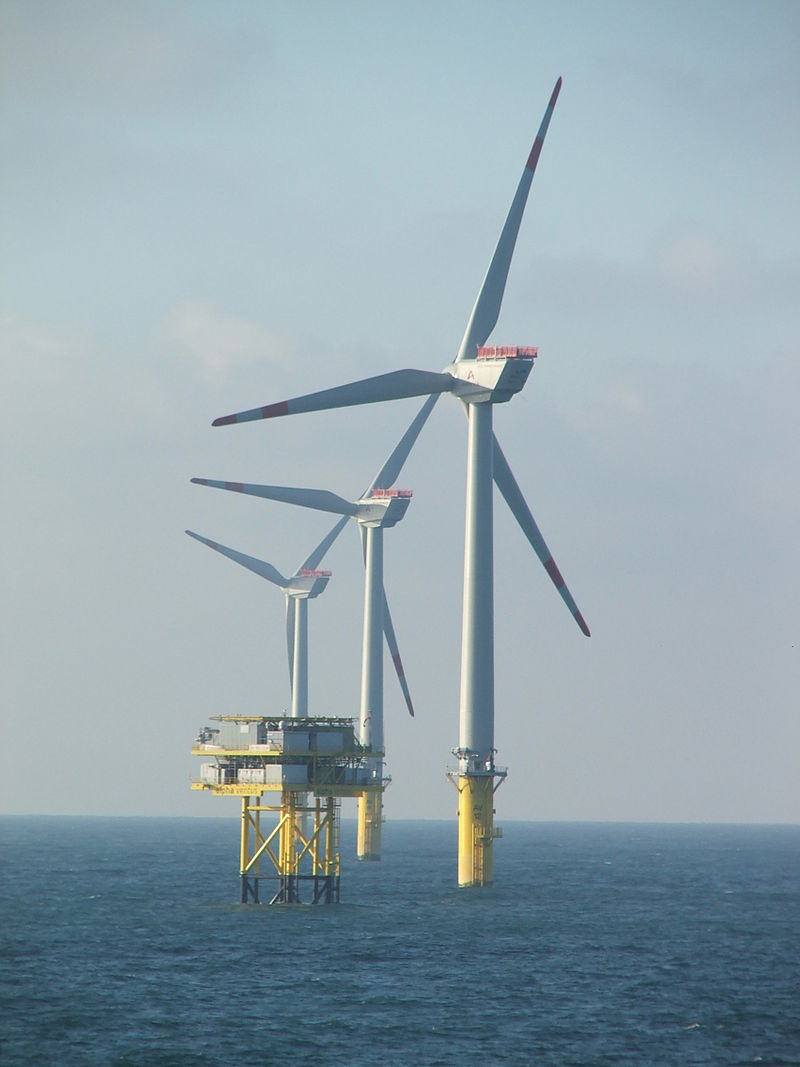
By combining wind turbines and batteries, AES hopes to deliver reliable power
On top of the wooded green, orange and red rain-soaked hills near here, AES Wind Generation LLC, a subsidiary of AES Corp?., yesterday unveiled its new grid-scale power storage system, the largest facility of its kind in the world.
The energy storage system is part of AES Laurel Mountain, a 13-mile stretch of 61 wind turbines traversing Barbour and Randolph counties. “We’ve never put wind and storage in one location [before today],” said Phil Harrington, AES’s president of global wind generation. “The combination of these resources together holds the promise of grid stability.”
The 80-meter-tall turbines, manufactured by General Electric Co., feed into the PJM Interconnection?, the largest power market in the world, spanning the American Northeast and Midwest and serving 51 million people. The wind generators provide 1.6 megawatts each, forming a 97.6 MW array.
The adjacent storage system, held in off-white converted shipping containers midway along the ridge, retains and distributes 32 MW of emissions-free electricity, more than double the size of AES’s previous grid storage facility. The generation and storage plant will supply more than 260,000 megawatt-hours of energy annually.
Inside, the storage containers resemble a computer server room, with identical banks of imposing black cabinets, small blinking lights and the incessant whirring of a chilled air cooling system. The cabinets house modules containing lithium-ion cells, each about the size of a standard C cell.
The battery technology is similar to what powers laptops and cellphones, but it also makes an attractive option for storing energy to distribute along an electric grid. “Generally, batteries would provide a quick response. That’s one of the advantages. It can satisfy the [electricity] demand according to the detailed requirements of wherever it is,” said Gary Yang, a laboratory fellow at Pacific Northwest National Laboratory. “Lithium-ion is the most efficient battery … with over 90 percent efficiency.”
Yang said that lithium-ion batteries are superior in many ways to existing storage options. Currently, the most common form of grid-level energy storage involves pumping water uphill in times of surplus energy and channeling it down through a turbine in times of excess demand. Such a process, unlike battery storage, requires a specific type of terrain and substantial upfront costs, according to Yang. Other storage technologies include compressing air underground or spinning flywheels, both of which also face issues of siting and cost.
Augmenting a fickle power source
The drive for energy storage comes from wind and solar power’s growth and the need to address their shortfalls. “Renewable power varies over minutes, hours, days and even seasons. In order to maintain the balance, you need to make some adjustments,” said Yang. “Overall, technologies including batteries are seen as a key enabler for the future grid or ‘smart grid’ that integrates a significant level of renewables.”
Grid batteries fit into existing models of power production and management. “The storage technology provides power in much the same way a power plant does,” said Chris Shelton, president of AES Energy Storage LLC, noting that the lithium-ion cells can rapidly raise or lower the amount of energy they discharge into the grid. “The novelty here is that we have a commercial energy storage system.”
Read more . . .








